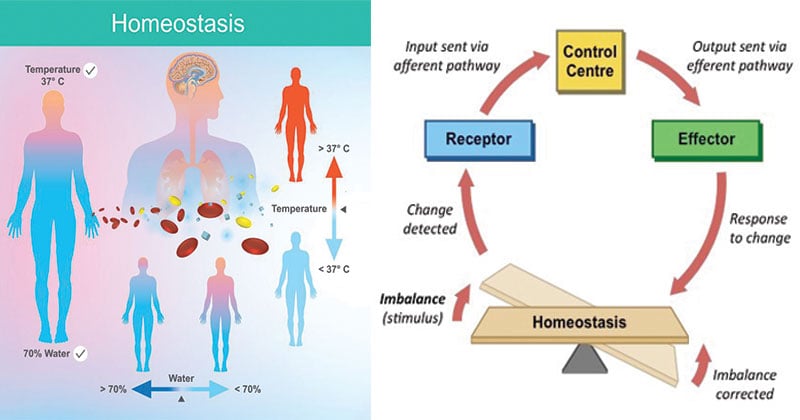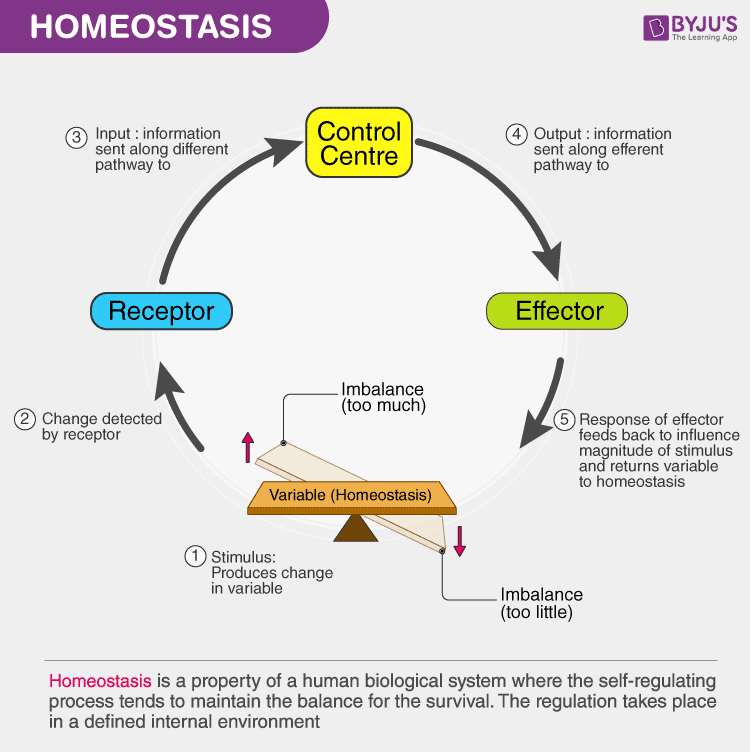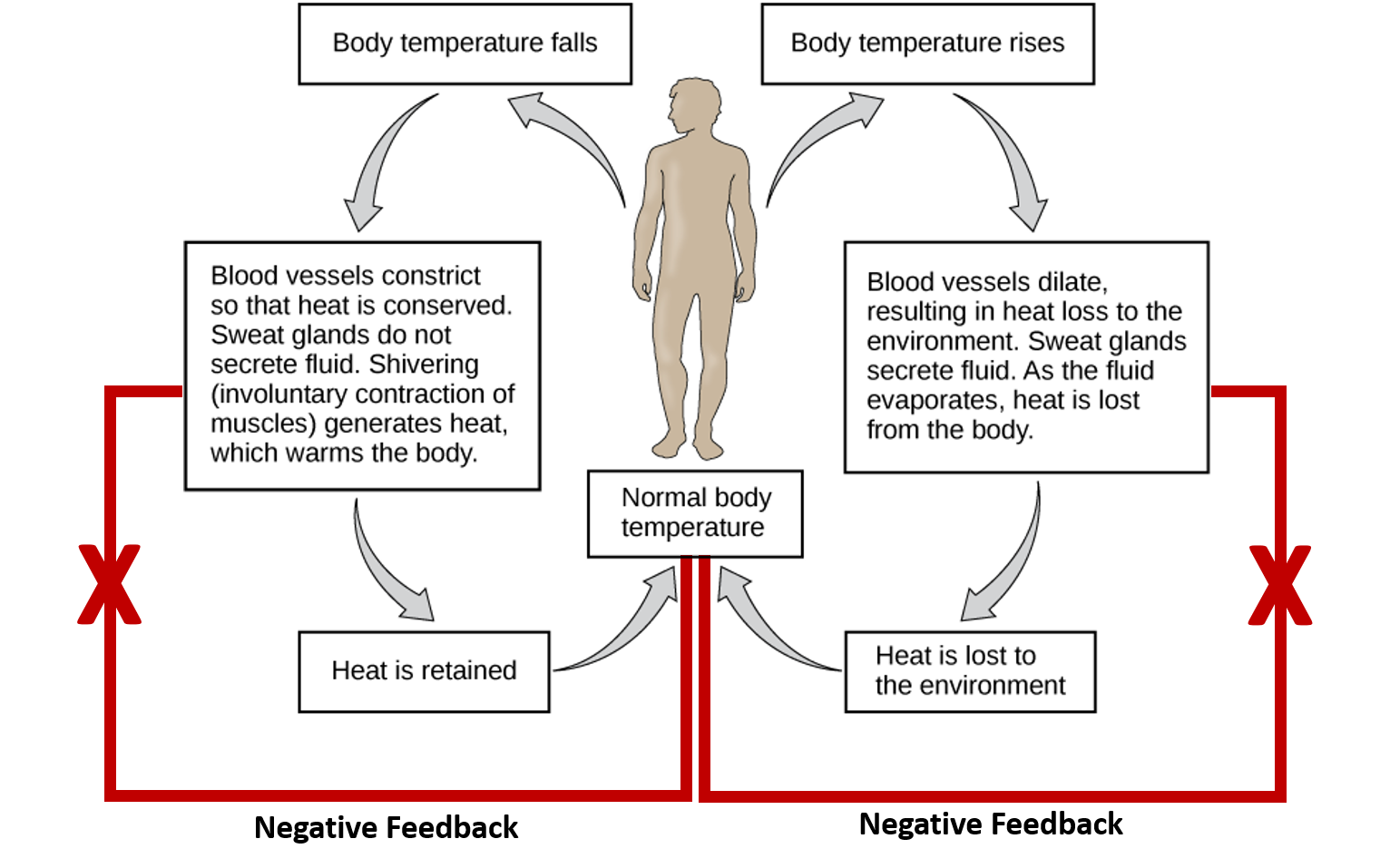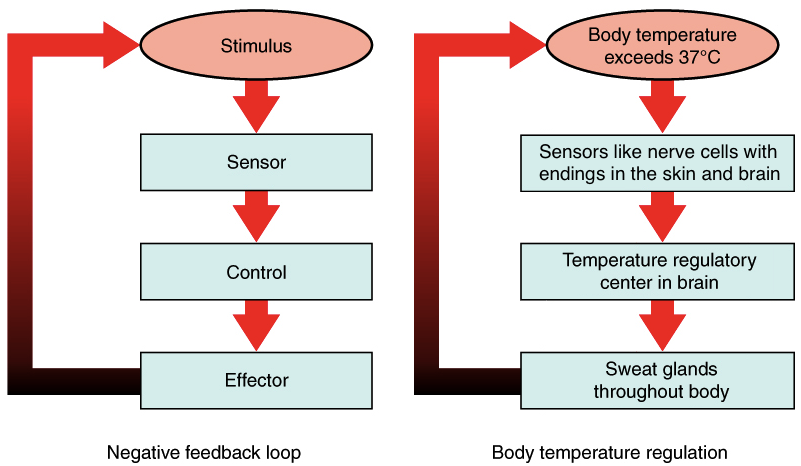Homeostasis Is Best Described as the Idea That
It is the control center for the homeostatic balance that determines how warm or how cool it will be. B The loss of homeostatic control can cause illness but cannot cause death.

Homeostasis Definition Types Examples Applications
Homeostasis can be described as.

. Homeostasis is having a good sense of balance. Homeostasis is the property of a system in which variables are regulated so that internal conditions remain stable and relatively constant. 1 an internal stability within a range of values and 2 the coordinated dynamic response that maintains this internal stability self-regulatory goal-seeking behavior.
We have developed and described such an unpacking of the core concept of homeostasis 12 13. We normally think about homeostasis in terms of the whole body but individual. Functions of the body and study of diseases.
The permeability constant P for diffusion across a membrane is determined by. Homeostasis is the ability of an organism to maintain body temperature. Describe the relationship between homeostasis and feedback loops.
The study of human physiology is best described as. Homeostasis is an organisms process of maintaining a stable internal environment suitable for sustaining life. The most accurate definition of homeostasis The ability of an organism to maintain relatively constant internal conditions despite variability in external conditions.
This is the condition of optimal functioning for the organism and includes many variables such as body temperature and fluid balance being kept within certain pre-set limits homeostatic range. Homeostasis is the ability of organisms to maintain stable internal conditions despite changes to external conditions. Each cell in the body depends on homeostasis for its own survival.
Conditions inside our bodies are not constant but are kept within a narrow range. All living organisms whether unicellular or multicellular exhibit homeostasis. Thus the term homeostasis attempts to convey two ideas.
Homeostasis refers to the mechanism of the body to maintain a stable internal environment instead of changes taking place in the external environment. In biology homeostasis is the state of steady internal physical and chemical conditions maintained by living systems. The maintain that equilibrium body control temperature blood.
This state of internal equilibrium is called homeostasis and it comes as a result of coordinating the efforts of the bodys organ systems. C Internal conditions are absolutely. Homeostasis is necessary because human cells are efficient but very demanding.
Homeostasis a core tenet of life science describes how organisms keep their internal environment stable despite constant disruptions. In the early 1900s physiologist Walter B. Lets image that the dad is a controlling person and that he has put a locked box over the thermostat so no one else in the family can change the setting.
Gas exchange of Co2 for oxygen occurs. Cannon took Claude Bernards concept of milieu intérieur and developed it even further as the concept of homeostasis Cannon described homeostasis as the maintenance of a stable and steady internal environment and the astonishing physiological processes by which it is regulated. - diffusion coefficient - solvent viscosity - temperature - partition coefficient -Higher Temp Higher Fluidity -Less F.
Homeostasis typically involves negative feedback loops that counteract changes of various properties from their target values known as set points. - An optimal dynamic steady state of the internal environment. To understand homeostasis think of the thermostat in your home.
This problem has been solved. Homeostasis is a term which describes the process whereby the body ________. The word homeostasis derives from Greek with home meaning similar and stasis meaning stableWhen used as an adjective it is homeostatic.
Each organ system contributes to homeostasis by counteracting changes to the stable internal environment. Homeostasis is the process by which the body maintains a near constant internal environment. This is not the same as keeping the body in a fixed and unaltered state for instance when we exercise it is important that our heart rate increases.
Add answer 5 pts. The study of anatomy is best described as. Up to 24 cash back 2.
Homeostasis describes how the body regulates its process to keep its internal conditions as stable as possible. Homeostasis is the ability of organisms to regulate external conditions. Homeostasis can also be described as a hierarchically arranged set of statements a conceptual framework that contains whatever breath and depth of information is appropriate for a particular set of students in a course.
Homeostasis means steady state. The phrase homeostasis is a bit confusing. Which of the following statements accurately describes homeostasis.
The model and the conceptual framework provide. A Homeostasis is the dynamic maintenance of a stable internal extracellular environment within the organism. A The body has the ability to detect change activate mechanisms that oppose it and maintain relatively stable internal conditions.
Heating an area of the skin can cause sweat glands in that area to begin producing and releasing sweat. I would describe homeostasis as the process of keeping somethingthe way it is. Saturation higher fluidity -Higher cholesterol.
Homeostasis is the tendency to resist change in order to maintain a stable relatively constant internal environment. For example mammals maintain a constant bodytemperature no matter what the weather is like which is a form. Score 897 ephraimzRN Points 2264 User.
Homeostasis in the human body can best be described as. For example the normal temperature for most body. The balance that is attained is called dynamic equilibrium which means as the changes occur body work to maintain a relatively uniform conditions.
Maintenance of a stable environment for the preservation of normal cell function is termed.

What Is Homeostasis Meaning Definition And Examples


Comments
Post a Comment